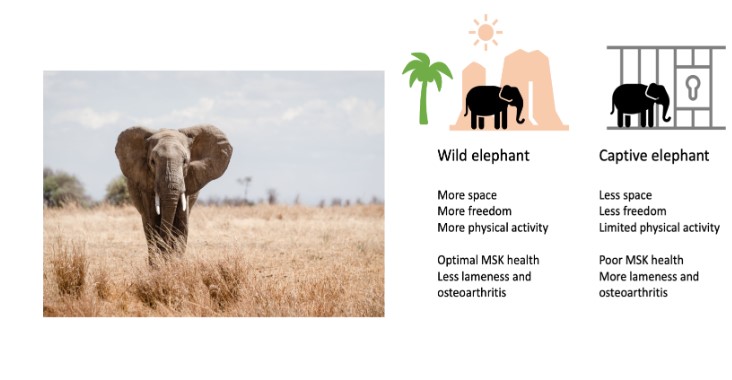The African bush and forest elephants, Loxodonta Africana and Loxodonta cyclotis, and the Asian elephant, Elephas maximus, are the largest land-dwelling animals. Elephants need to be highly mobile and active in order to find fresh food and water, and in the case of males, to locate females in estrus for breeding. Asian elephants walk up to 13 miles each day and African elephants can walk up to 28 km per day. This high level of mobility in the wild is also important for maintaining an optimum musculoskeletal health. However, their captive counterparts live in restricted spaces and cold climates that require extended periods of indoor confinement are therefore unable to be as physically active. Zoo enclosures for elephants are relatively small with hard surfaces (i.e. concrete, tarmac and hard packed dirt), so they cannot exercise and are forced to stand on unnaturally hard surfaces continually. Physical inactivity in captivity makes them more prone to gaining weight and developing bone and joint diseases such as osteomyelitis, joint ankylosis and osteoarthritis (OA). Up to 50% of deaths in captive elephants are caused by the lack of mobility. This perspective article focuses on the link between captivity, mobility, physical inactivity and the development of OA in captive elephants.

